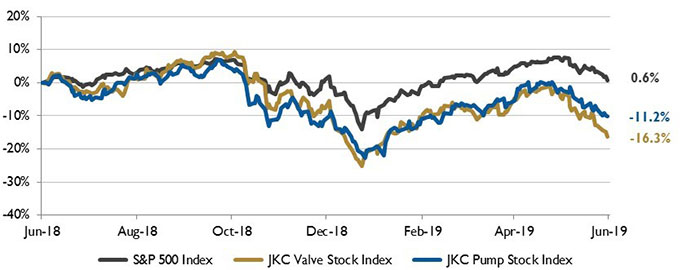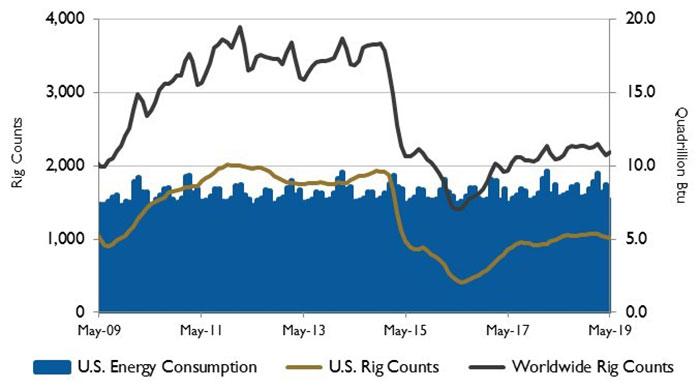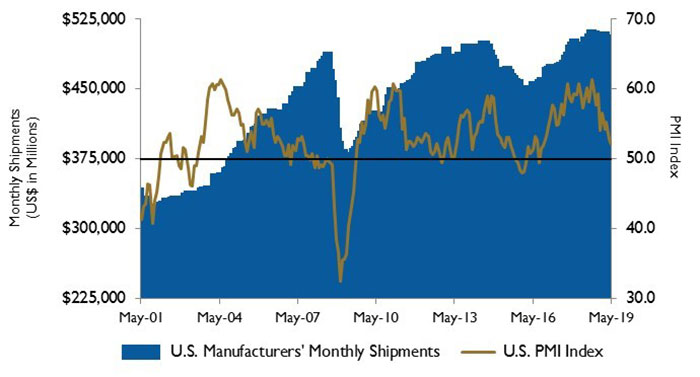Pump Market Analysis
07/01/2019
The Jordan Knauff & Company (JKC) Valve Stock Index was down 2.6 percent over the last 12 months, while the broader S&P 500 Index was up 10.9 percent. The JKC Pump Stock Index fell 2.4 percent for the same time period.1 The Institute for Supply Management’s Purchasing Managers’ Index (PMI) registered 52.8 percent in April, a decrease of 2.5 percentage points since March, the slowest pace of growth in two and a half years. The drop can mostly be traced to employment, which dropped to 52.4 percent from 57.5 percent, and new orders, which fell 5.7 percentage points to 51.7. The fall of new orders points to a weakening in domestic demand and continued anemic growth overseas. Export orders declined to 49.5 percent.
 Image 1. Stock Indices from May 1, 2018 to April 30, 2019. Local currency converted to USD using historical spot rates. The JKC Pump and Valve Stock Indices include a select list of publicly traded companies involved in the pump and valve industries, weighted by market capitalization. Source: Capital IQ and JKC research.
Image 1. Stock Indices from May 1, 2018 to April 30, 2019. Local currency converted to USD using historical spot rates. The JKC Pump and Valve Stock Indices include a select list of publicly traded companies involved in the pump and valve industries, weighted by market capitalization. Source: Capital IQ and JKC research. Image 2. U.S. energy consumption and rig counts. Source: U.S. Energy Information Administration and Baker Hughes Inc.
Image 2. U.S. energy consumption and rig counts. Source: U.S. Energy Information Administration and Baker Hughes Inc. Image 3. U.S. PMI and manufacturing shipments. Source: Institute for Supply Management Manufacturing Report on Business and U.S. Census Bureau
Image 3. U.S. PMI and manufacturing shipments. Source: Institute for Supply Management Manufacturing Report on Business and U.S. Census Bureau
